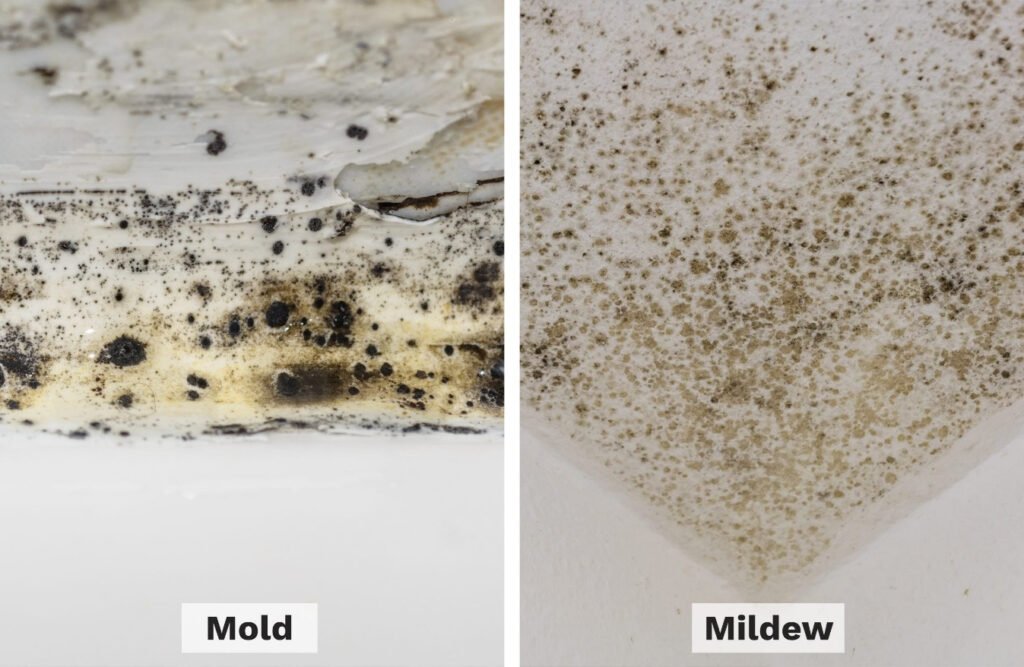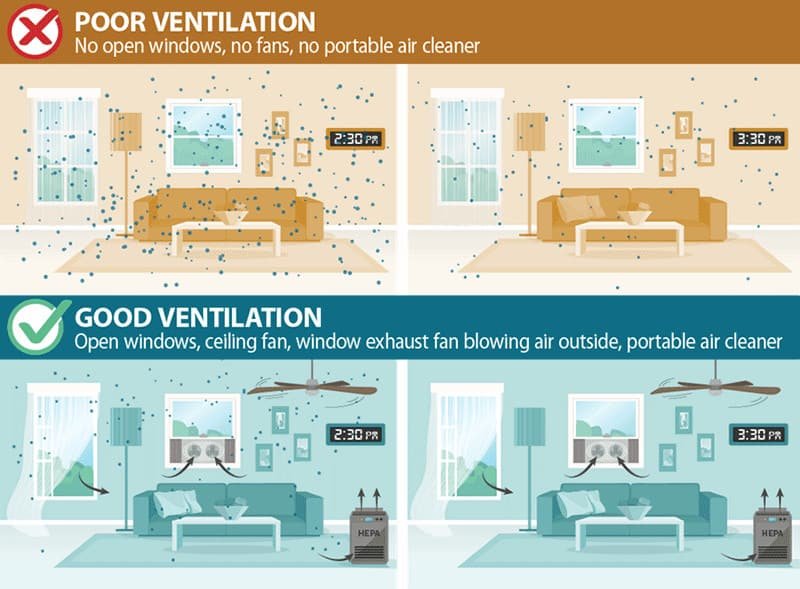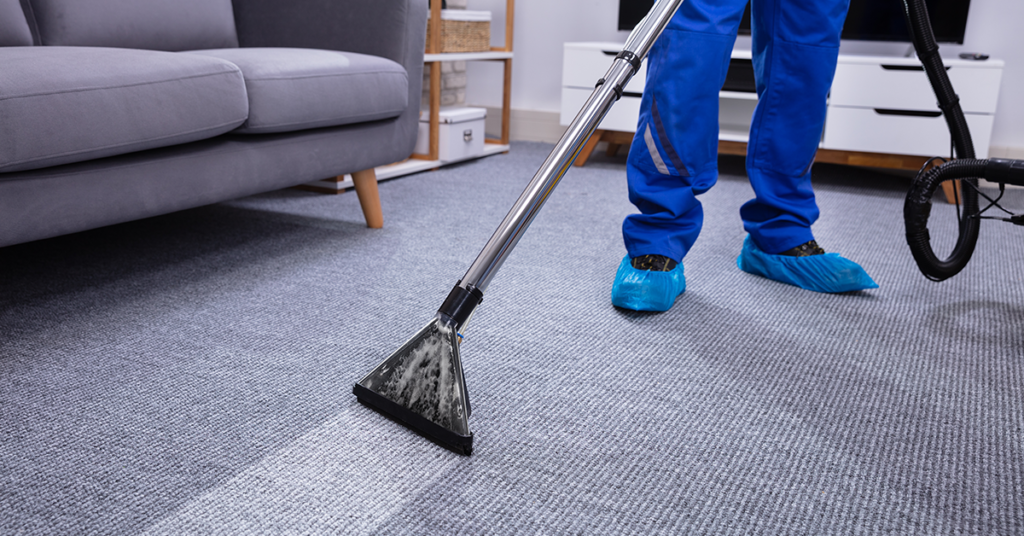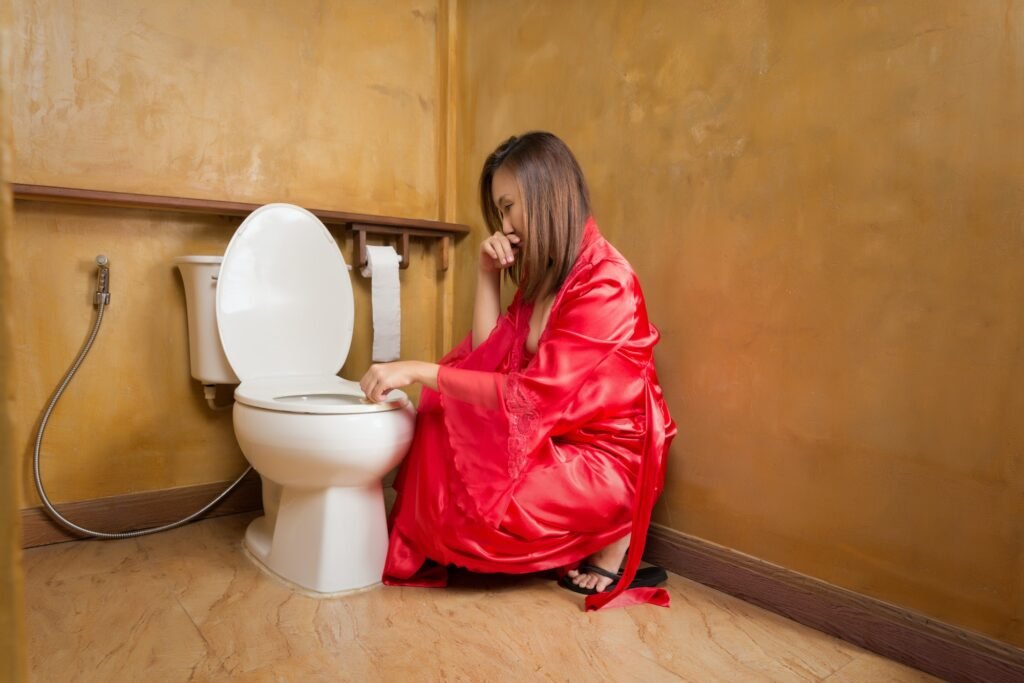A musty odor is distinct, damp, earthy, or moldy. It is often associated with old or stale air. It can occur in various locations, including homes, basements, and storage areas. Clothing or other materials stored for long periods also produce a musty smell. Musty odors are caused by the growth of mold or mildew, which thrive in damp and poorly ventilated environments. These smells can be unpleasant and even trigger respiratory problems or allergies in some individuals. So, it is vital to address the leading cause of the musty smell and take steps to remove it.
What Causes Musty Smells in Home?
There are several possible causes of musty smells in homes, including:
- Moisture:
Excess moisture in the air can create a growing ground for mold and mildew. These mold and mildew growth leads to produce a musty odor. High humidity, water leaks, or inadequate ventilation can cause this.
- Mold and Mildew:

Mildew and mold are fungi that thrive in warm, damp, and humid environments. They often grow in bathrooms, basements, and other areas with moisture. Mold and mildew can produce a strong, musty odor that is difficult to eliminate.
- Poor Ventilation:

Poor ventilation can trap moisture and odors inside the home. This is common in older homes or buildings with inadequate air circulation.
- Dirty HVAC System:
A dirty heating, ventilation, and air conditioning (HVAC) system can circulate musty air in the home. Dirty air filters, clogged ductwork, or other issues with the HVAC system can cause this.
- Dirty Carpets or Furniture:
Carpets and furniture can absorb moisture and odors over time. Primarily, a musty smell is produced if they are not cleaned regularly. This can result in a musty odor that can be difficult to remove. To eliminate musty smells in the home, it is vital to identify the primary cause. This may involve;
· fixing leaks
· Improving ventilation, cleaning carpets and furniture
· Having the HVAC system serviced.

Note:
When removing mildew and mold, always consider safety. Always wear protective clothing. It involves goggles, long gloves, and a respirator. It will prevent from inhaling the mold and mold spores. When cleaning the bag up and put in outside garbage, all sponges and rags have mold spores to prevent them from spreading.
Are Mold and Mildew Dangerous?
Mold and mildew can be dangerous. Yet, it is unfit for individuals with allergies, asthma, or weakened immune systems. Here are some potential health risks linked with exposure to mold and mildew:
- Allergic reactions:
Some people may experience allergic reactions to mold and mildew. These include sneezing, runny nose, red eyes, and skin rashes.
- Respiratory problems:
Exposure to mold and mildew can trigger respiratory problems. Yet, these involve coughing, wheezing, and difficulty breathing. This can be especially dangerous for people with asthma or other respiratory conditions.
- Infections:
Some types of mold cause infections in individuals with weakened immune systems. Yet, such people are undergoing chemotherapy or organ transplant recipients.
- Toxic effects:
Some types of mold produce toxic substances called mycotoxins. It causes a range of health problems. These include respiratory and neurological symptoms.
It is vital to reduce the health risks associated with mold and mildew. Yet, you need to address any moisture problems in the home promptly. Clean up any visible mold or mildew growth. Sometimes, you suspect you have a mold or mildew problem beyond your ability to handle it. Yet, it is necessary to consult with a professional mold remediation service.
How to Locate the Source of the Musty Smell in Your Home?
To locate the source of a musty smell in your home, you can follow these steps:
1. Start by identifying the areas where the odor is most prominent. Walk around your home and see if you can find where the smell is coming from.
2. Check for signs of moisture or water damage. Look for water stains on walls, ceilings, or floors. Check for leaks around windows, doors, and plumbing fixtures.
3. Inspect your HVAC system. Check your air filters, ducts, and vents for mold or mildew growth signs. Make sure your system is adequately ventilated.
4. Look for visible signs of mold or mildew growth. Check areas that are prone to moisture. These areas are bathrooms, basements, and crawl spaces. Find the indications of mold or mildew on walls, ceilings, and floors.
5. Check carpets and furniture. The majority of homes have carpeting or furniture. They may be absorbing moisture and odors, so also check these areas.
6. Check the leakage around the dishwasher and sink in the kitchen. Look out the refrigerator from behind. Check the other small devices like the tea kettle and coffee maker that use water. Yet, you also need to check the trashcan as the mildew grows below the disposable trash bag liner.
7. Don’t forget to check the garage, basement, and attic to locate the damp places near heaters and windows.
8. Use your sense of smell to narrow down the source. Once you have identified the areas where the odor is most prominent, use your sense of smell to narrow down the source. Sniff around the site and see if you can identify any particular object or material that smells musty.
Following these measures, you should be able to locate the source of the musty smell in your home. Take appropriate action to address the underlying cause.

How to Clean Mildew in Home?
If you notice mildew, you need to get rid of it before or after you resolve the issue that caused it. You are not required to use bleach to remove a few small mold spots. Instead, you can use a bucket of warm water and a few squirts of dish detergent. To clean mildew in your home, you can follow these steps:
1. Wear protective gear: Ensure you have protective gear before cleaning. It includes gloves, a mask, and eye protection. This will help prevent skin irritation and inhalation of spores.
2. Identify the affected areas: Look for signs of mildew growth, like discoloration and musty odors—attention areas with high humidity, such as bathrooms, kitchens, and basements.
3. Prepare a cleaning solution: Mix one part bleach with four parts water or a commercial mildew cleaner. Follow the instructions on the label for dilution and application.
4. Apply the cleaning solution: Use a spray bottle or a sponge to apply the cleaning solution to the affected areas. Be sure to saturate the site and allow the solution to sit for 10-15 minutes.
5. Scrub the affected areas: Use a scrub brush or sponge to remove the mildew growth. Be sure to work in a circular motion and apply firm pressure to remove as much mildew as possible.
6. Rinse the area: Rinse the area with clean water to remove any remaining mildew and cleaning solution.
7. Dry the area: Use a clean, dry cloth or towel to dry the area. This will help prevent moisture from returning and encourage new mildew growth.
8. Dispose of cleaning materials: Once you have finished cleaning, dispose of any cleaning materials. These materials are sponges and towels in a sealed plastic bag.
By following these steps, you can clean mildew from your home and prevent its return. To prevent future growth, it is vital to highlight the underlying cause of the mildew growth, such as high humidity or water damage.
How to Remove Mold from Home?
Removing mold from your home can be a challenging task, but here are some steps you can take:
1. Identify and address the source of moisture:
Mold requires moisture to grow. Identifying and addressing the moisture source in your home is essential. This may include fixing leaks, improving ventilation, and reducing humidity levels.
- Bathroom
In the bathroom, look for mold in the shower. Along the seals of the tub, behind the toilet, and under the sink. Don’t forget to look inside the cabinets close to these warm, wet places.
- Kitchen
In your kitchen, look around the sink and behind the fridge, dishwasher, and washing machine, all of which get wet. Check inside the cabinets, especially those that are close to pipes.
- The attic and the cellar
Mold can grow in these places because they are not used or disturbed. Look around the water heater, vents, windows, and any stored items that could be a place for mold to grow. If your house has a crawl space, you should look for signs of decay.
- Living Room and Bedrooms
Even though it is less likely, mold can still live behind furniture, on mattresses, and in stored clothes or blankets. Check the area around your windows, especially if you have central heating, because condensation on the windows can cause water to build up on the sills.
- Clean up visible mold:
Use a solution of one part bleach to four parts water or a commercial mold cleaner to clean up the visible mold. Follow the steps outlined in the previous answer for cleaning mildew.
- Remove moldy materials:
If mold has grown on porous materials such as drywall or carpeting, removing and replacing these materials may be necessary to remove the mold altogether.
- Encapsulate surfaces:
Once the mold has been removed, you can encapsulate surfaces with a mold-resistant coating to prevent future growth. This may include painting or applying a sealant to surfaces such as walls or floors.
- Maintain proper ventilation:
Ensure your home has adequate ventilation in bathrooms, kitchens, and basements. Use exhaust fans or open windows to improve airflow and reduce humidity levels.
- Regular cleaning and maintenance:
Regularly clean and maintain your home to prevent moisture and mold growth buildup. This includes periodically cleaning bathrooms and kitchens, using a dehumidifier in high-humidity areas, and addressing leaks or water damage.
- Fix the plumbing leaks and other water issues quickly. Find the source of the mold.
Removing mold requires identifying and addressing the source of moisture, thorough cleaning, and ongoing maintenance. Suppose the mold growth is extensive, or you are unsure how to proceed. Consulting with a professional mold remediation service may be necessary in that case. If you have not located the mold sources, contact a professional if you think it is hiding below the wallpaper and are afraid that eliminating it will lead to spore release.

How to Avoid Musty Smells from Coming Back
To prevent musty smells from coming back into your home, you can follow these steps:
1. Reduce humidity levels:
High humidity levels can contribute to the growth of mildew and mold, which can cause musty odors. Use a dehumidifier, improve ventilation, or use air conditioning to reduce humidity levels in your home.
2. Fix any leaks or water damage:
Moisture is one of the leading causes of musty odors, so it’s essential to fix any leaks or water damage as soon as possible to prevent the growth of mold and mildew.
3. Clean regularly:
Regular cleaning can help prevent dust, dirt, and moisture buildup contributing to musty odors—attention areas with high humidity, such as bathrooms, kitchens, and basements.
4. Use mold-resistant products:
Use mold-resistant paints, coatings, and building materials in areas prone to moisture and mold growth, such as bathrooms and basements.
5. Keep the air flowing:
Good ventilation can help prevent the buildup of moisture and musty odors. Open windows, use exhaust fans, and keep air circulating throughout your home.
6. Address musty odors in clothes:
Fabrics, such as clothing, bedding, and curtains, can hold onto musty odors. Wash and dry these items thoroughly and store them in dry, well-ventilated areas.

